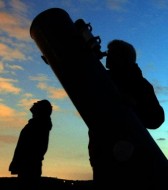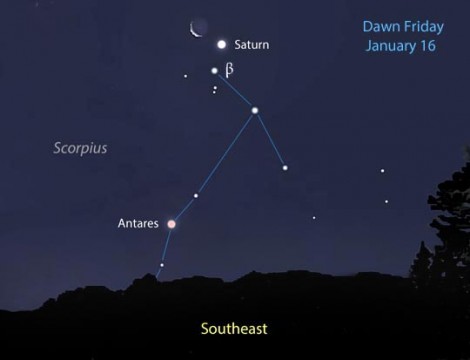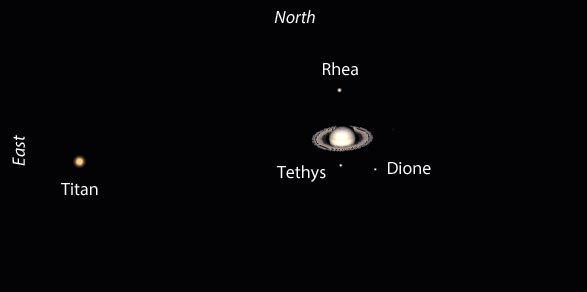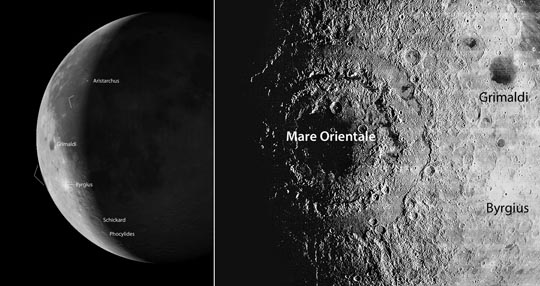Are you going to let the cold and early hour stop you from seeing Saturn's meeting with the Moon Friday morning? Of course not!

Bob King
The bed's so warm, the hour so early. Will you brave the cold Friday morning to witness the conjunction of Saturn and the waning Moon? Allow me to be the little devil guy on your shoulder whispering "yes, do it!" in your ear.
Morning observing, especially in winter, can feel like a lonely solo climb. But I've found that once you've poked a leg out from under the covers and rubbed your eyes, you're halfway there. Don't forget to pull the curtain aside to make sure it's clear.
What better way to welcome Saturn back for its 2015 apparition than in the company of the slender Moon. Admit it, you're hungry to see those gorgeous rings that make the planet such a special destination.
If that wasn't enough, how many of us get to see a thick waning crescent Moon in our telescopes? Since I spend far more evenings observing the sky, the lay of the lunar landscape looks strangely unfamiliar during the waning phases. The shadows seem wrong in the same disorienting way as when we see the northern stars "upside down" from the southern hemisphere.

Source: Stellarium

Source: Stellarium
Lunar libration will have tilted a unique feature our way on Friday — Mare Orientale, a huge (mostly) farside multi-ringed impact basin that looks like a cosmic bulls-eye. Moats of mare lavas separating the concentric rings show as a series of dark, parallel stripes just inside the Moon's western edge. Look for them.

Left: Virtual Moon Atlas (Christian Legrand and Patrick Chevalley), right: NASA
Saturn and the Moon would seem reward enough for any intrepid dawn observer, but there's more. Drop just 1° below Saturn and you'll bump right into Beta (β) Scorpii, the southern version of the Big Dipper's Mizar. Both are among the prettiest double stars in the sky. Beta, or Graffias, shines at magnitude 2.6 with a 4.5 magnitude companion 13.6″ to the north-northeast. Both are radiant jewels like the summer season to which they belong; they split with ease in a 3-inch telescope.

Michael Vlasov
I could keep on going. The region is rich with globular clusters and additional double stars, but your fingers will be getting cold by now and the Sun will rise soon. Before you step back inside to thaw out, take a minute to look around at Lyra and Cygnus rising in the east, constellations that, along with Scorpius, herald the coming of summer. Soon enough winter will be behind us. Instead of the cold, mosquitoes will be doing the biting!
 2
2









Comments
Anthony Barreiro
January 14, 2015 at 3:59 pm
Thanks Bob. For the past few weeks I've been enjoying watching Saturn climb higher in the pre-dawn sky as he creeps from Libra toward Scorpius. I haven't looked at Saturn through a telescope yet during this apparition, mainly because he's pretty low toward the south, and I would have to schlep my telescope around the corner to get a good view. But soon I will!
Yes, the waning Moon looks very different than the waxing Moon, and every Moon map I've ever seen shows the Moon under consistent lunar eastern illumination, as she appears during her waxing phases. I wish Sky and Telescope would publish a Moon map with all the features depicted under consistent lunar western illumination, for use during the waning phases.
You must be logged in to post a comment.
Bob KingPost Author
January 17, 2015 at 1:38 am
Anthony,
That's a great idea for a different take on a Moon map. I hope Saturn soon rises high enough for you for a telescopic view.
You must be logged in to post a comment.
You must be logged in to post a comment.